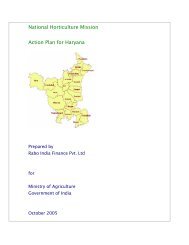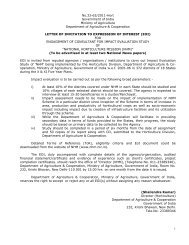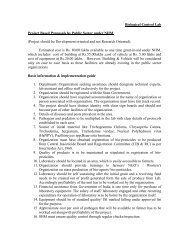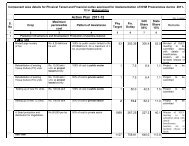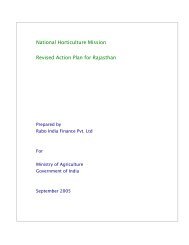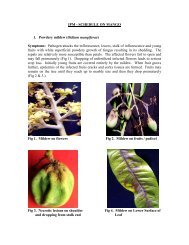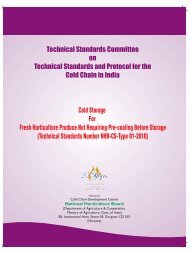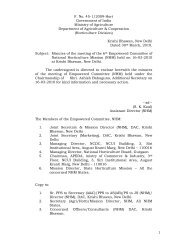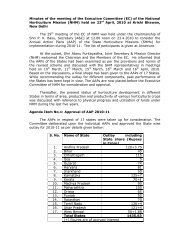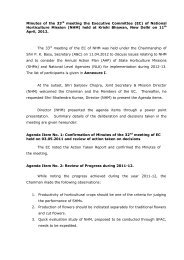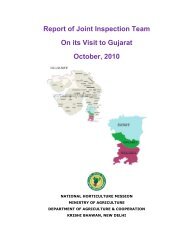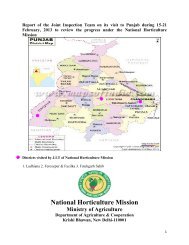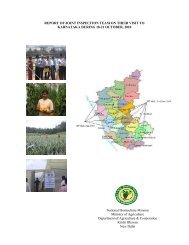IPM SCHEDULE FOR AONLA PESTS National Horticulture Mission
IPM SCHEDULE FOR AONLA PESTS National Horticulture Mission
IPM SCHEDULE FOR AONLA PESTS National Horticulture Mission
Create successful ePaper yourself
Turn your PDF publications into a flip-book with our unique Google optimized e-Paper software.
Management<br />
Careful handing of fruits. Any injury on the fruit surface during harvesting and<br />
storage make the aonla fruits prone to blue mould<br />
Avoid bruising or injury to fruits while harvesting.<br />
Sanitary conditions in storage should be maintained.<br />
Treatment of fruits with borax or sodium chloride (1%) checks the blue mould<br />
infection.<br />
Treatment with carbendazim or thiophanate methyl 0.1% after harvest.<br />
Fruits smeared with mentha oil, checks the rot.<br />
6. Anthracnose: [Colletotrichum gloeosporioides state of Glomerella cingulata (Ston.)<br />
Spauld and Schrenk.]<br />
Symptoms: Disease appears on leaf let and fruit during August- September. Initial<br />
symptom of the disease is in the form of minute, circular, brown to grey spots with<br />
yellowish margin on leaflets. The central area of the spot remains grayish raised with<br />
dot like fruiting bodies. On fruits, the depressed lesions are formed, which later turn dark<br />
in the centre forming acervuli often arranged in rings. The lesion may vary in size and<br />
shape with spore masses appearing on fruiting bodies at high humidity. Consequently the<br />
fruits become shriveled and rot (Fig 9 & 10). The disease is favoured by hot and humid<br />
weather.<br />
Fig. 9. Anthracnose on leaves<br />
Fig. 10. Anthracnose on fruits



